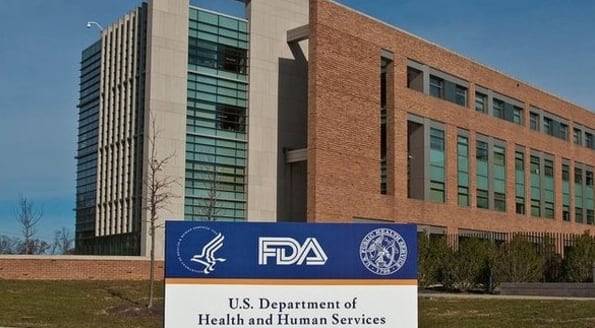“[Health and Human Services Secretary Alex] Azar and the White House made it very clear to me that they have been impressed with the things that FDA has been accomplishing, and they don’t want to disrupt this strong progress,” and so “there will be no pause at FDA,” Sharpless told attendees at a Food Drug Law Institute’s annual meeting in Washington, DC, late last week.
“I don’t anticipate extraordinary departures from the FDA’s recent priorities and course of action,” said Sharpless, noting that as such the agency will “continue to focus on innovation and efficiency” and ensuring that the agency’s processes are “as modern, efficient, and risk-based as possible across the industry.”
Reducing chronic disease through nutrition remains top priority
For food and nutrition this means continuing to support “efforts on labeling,” including the roll out of the new Nutrition Facts label and the “actions we have taken with regard to trans-fatty acids,” he said.
In 2015, FDA determined that partially hydrogenated oils were not Generally Recognized as Safe and while the majority of uses for PHOs were no longer allowed as of last June, FDA extended the compliance date for products produced before June 18, 2018 to work through distribution until Jan. 1, 2020.
Sharpless also said the agency would continue its “important work with our comprehensive, multi-year Nutrition Innovation Strategy,” which is focused on reducing the burden of chronic disease through improved nutrition.
“This strategy encompasses two important goals: first, to reduce preventable death and disease caused by poor nutrition by ensuring that consumers have access to accurate information to support healthy food choices and, second, to foster the development of healthier foods,” he said.
Food Safety efforts will not slow
On the food safety side, Sharpless said, the agency will continue to implement the “landmark” Food Safety Modernization Act, and help ensure that “many stakeholders, such as farmers and importers, [who] are experiencing a new level of oversight,” also have access to the resources they need to comply with the regulations.
As such, he noted, FDA has trained “thousands of farmers on the requirements of the Produce Safety Rule.”
In addition, he said the agency is “working to integrate our new import oversight tools with the existing tools,” such as the new Foreign Supplier Verification Programs that are part of the new Strategy for Safety of Imported Foods, announced earlier this year.
Finally, he plugged FDA’s recently announced “Blueprint for a New Era of Smarter Food Safety,” which he said “will allow us to upgrade our ability to rapidly track and trace food through the supply chain – making it possible [to] find the origin of contaminated food in a matter of minutes, rather than days or weeks.”
This will include a new pilot using artificial intelligence to enhance the agency’s review of imported foods at ports of entry in the US, he said.
A push for collaboration
Acknowledging that the role of Acting Commissioner is “daunting” because the agency has such a vast portfolio, Sharpless said the agency needs to embrace “better collaboration” with industry stakeholders, patients and advocacy groups, as well as other government agencies.
“We need to become more efficient, more collaborative, and more data-driven so that we can learn from every patient’s journey,” and ensure the agency’s “organizational structure is maximally efficient, and one that integrates people from different disciplines and across different states of a product’s lifecycle,” he said.
He added: “To fully and effectively achieve FDA’s mission to promote and protect public health, we must seize the opportunities offered by the scientific and technological advances,” and be “nimble, flexible and adaptable as we continue to advance regulatory frameworks, products and interventions




